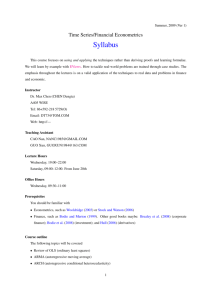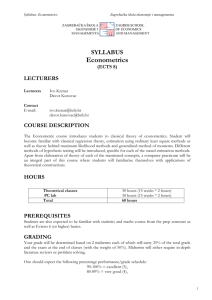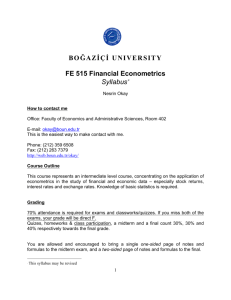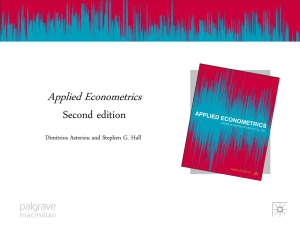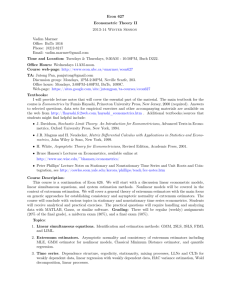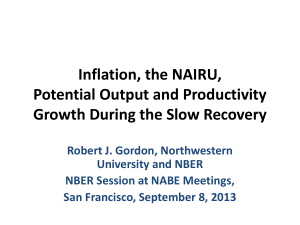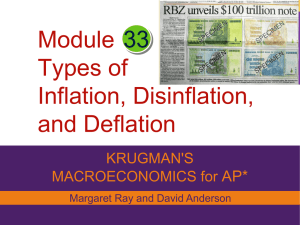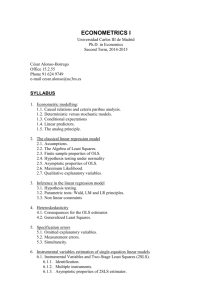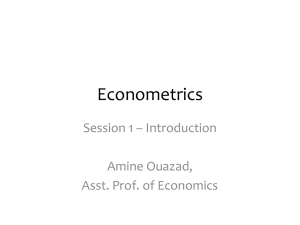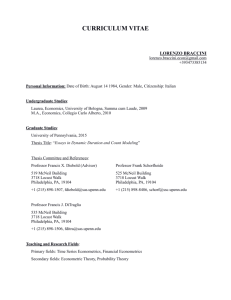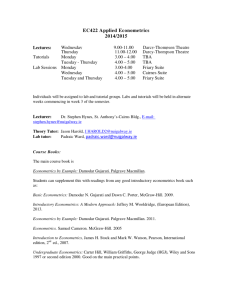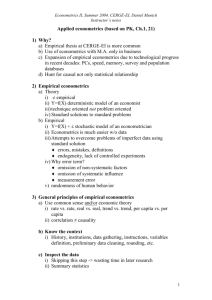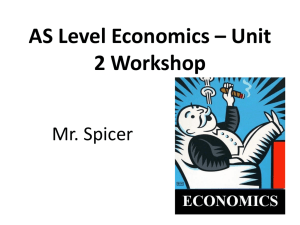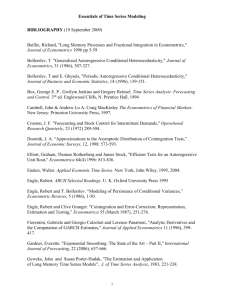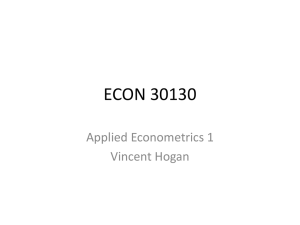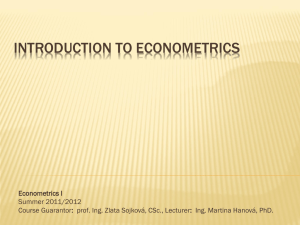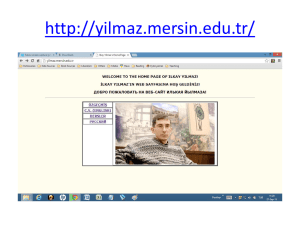PPT - WordPress.com
advertisement
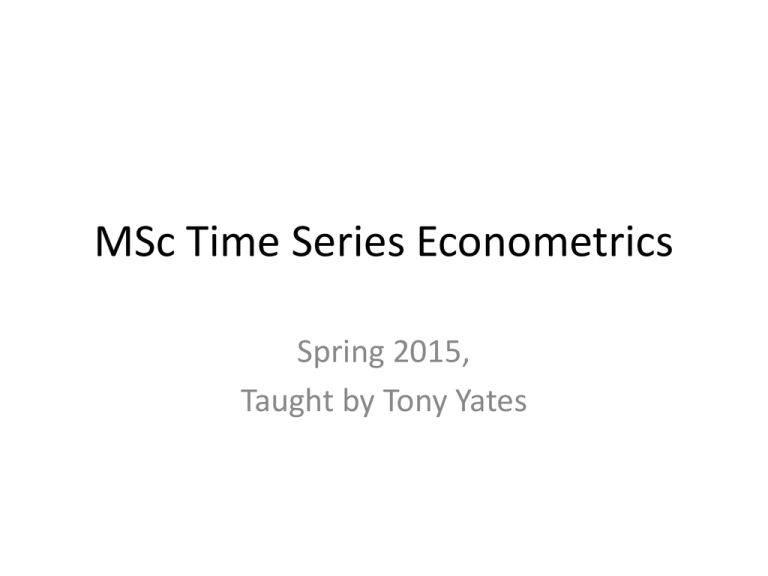
MSc Time Series Econometrics Spring 2015, Taught by Tony Yates What is time series econometrics? • Using data series on variables like, eg, inflation, unemployment, or growth to: – Forecast [important for central banks, or finance houses trying to price bonds, or any organisation trying to plan for the future] – Test the implications of, eg, macroeconomic models, to sort out good theories from bad ones: for example, is there a long run trade-off between inflation and unemployment? – TSE also has many applications in meteorology, biology, physics, chemistry… What is TSE: example from my old job at the BoE Every quarter the Bank of England’s Monetary Policy Committee meets to produce one of these charts. It’s their Inflation Forecast and a vital input to their decisions about interest rates and quantitative easing. The forecast is based on several kinds of time series model. These models encode a view about how the economy propagates shocks out into the future. And they are estimated. BoE and time series modelling • Necessity for one time series modelling task – foreasting • ..Born out of the reality of another time series fact: that there are ‘long and variable’ lags between policy changes and effects on inflation and output • Have to know what future inflation will be for a given policy in order to assess whether to change it Time series econometrics/economics • In general, time series econometrics essential and useful because of ‘time series economics’. • Economic events have consequences not just for today, but for the future. • Individual firms and consumers: Capital, durable goods, asset purchases, setting a rigid price, irreversible investment. • Policymaking agents: taxes and interest rates. Rep vs Het agent time series economics • Direct link between representative agent macro models and aggregate time series models • More realistically, but less practically, macrolife is a panel. • We won’t discuss panels here. But what we do cover involves overlapping techniques, and will provide stepping-stones. Topics covered: 1 • Estimation using maximum likelihood=finding the model that maximises the chance of having observed the data you have. • The Kalman Filter: using data on observables to uncover the unobservable, like the natural rate of unemployment. • Univariate and multivariate time series models: ARs, ARMAs, VARs, VARMAs Topics covered 2 • Forecasting • Impulse response analysis • Estimation using minimum distance and indirect inference • VARS and their time-varying equivalents. • Structural identification of economic shocks using VARs. • Bayesian time series econometrics. Topics covered 3 • Stationarity, unit roots. [Not cointegration] • Enabling topics like: techniques for finding mean and variance of autoregressive processes. • Summability and stability of time-series processes. • Lag operators and lag polynomials. Teaching • 8 two hour lectures. • 8 one hour tutorials. • Tutorials to go over non-assessed problem sets, designed to push you a little harder than the exam. • Course, as it develops, will emphasise discussion of applications in frontier research, particularly in macro-econometrics. Teaching 2 • Course content being built, and progress posted on my teaching homepage: • http://tonyyateshomepage.wordpress.com/te aching/ Exam • 3 hour exam, 4 questions. • Same format as last year. Choose 2/3 questions in each section. • Section A on univariate time series topics. • Section B on multivariate (VAR) time series topics. • Resit.

